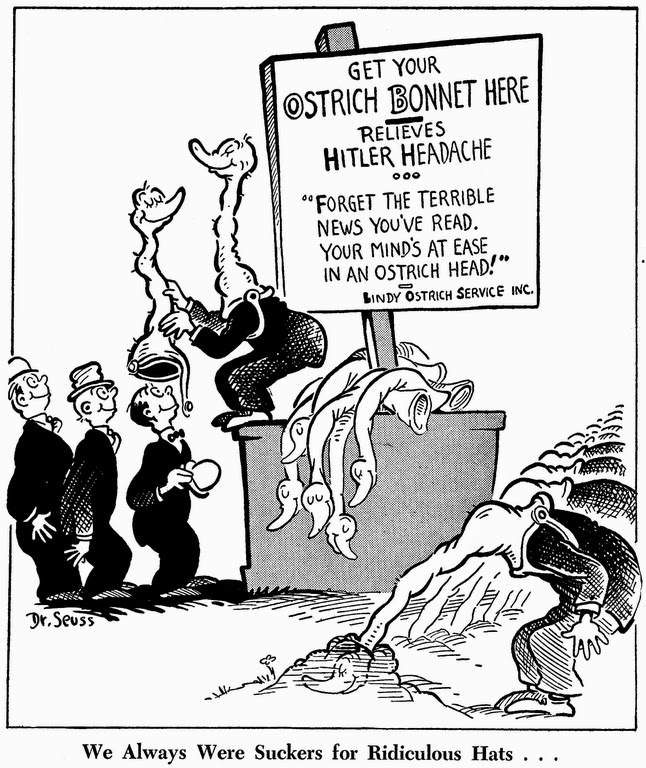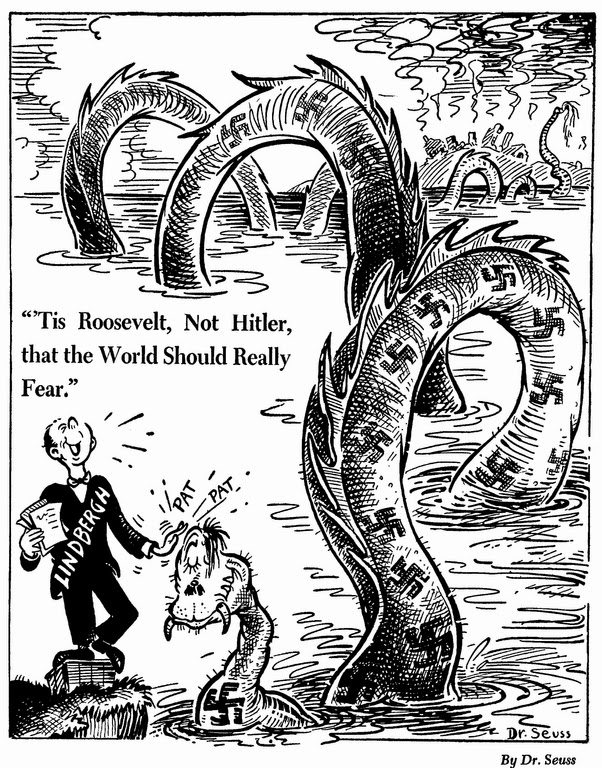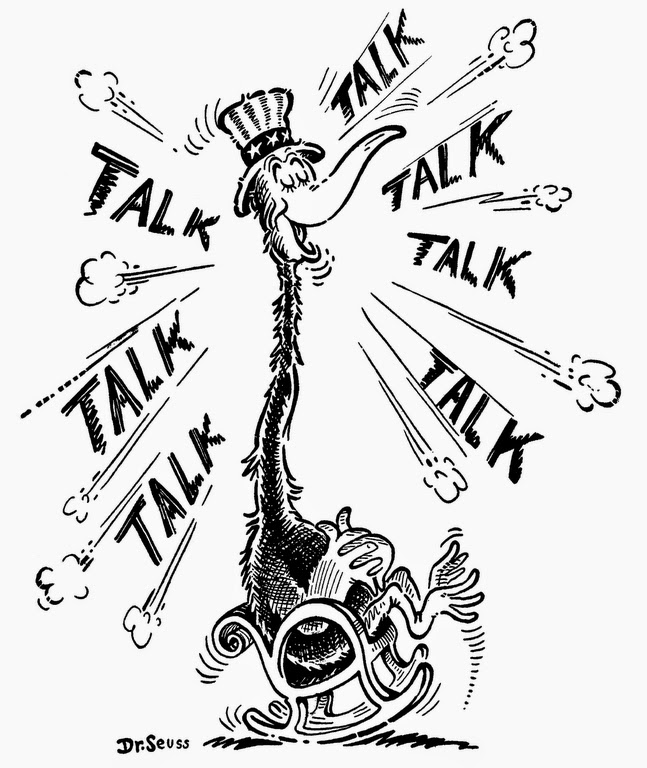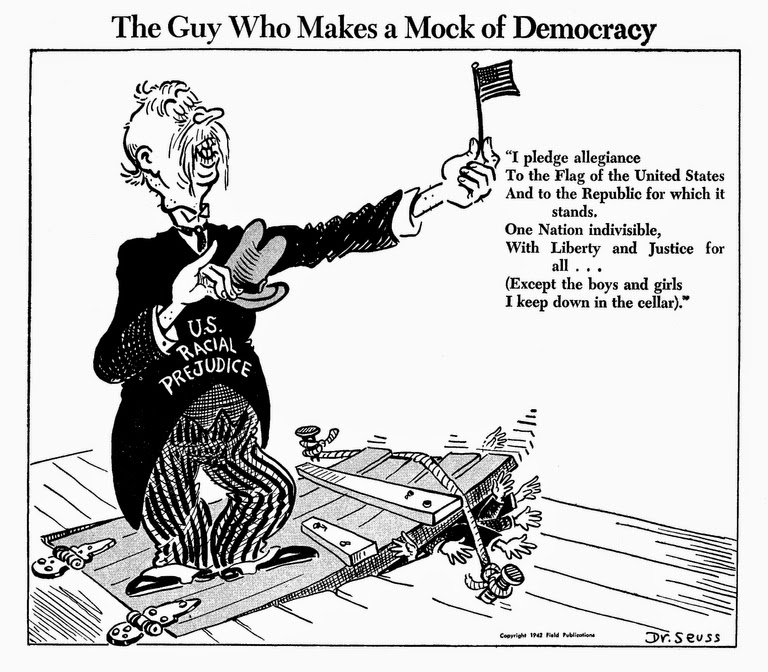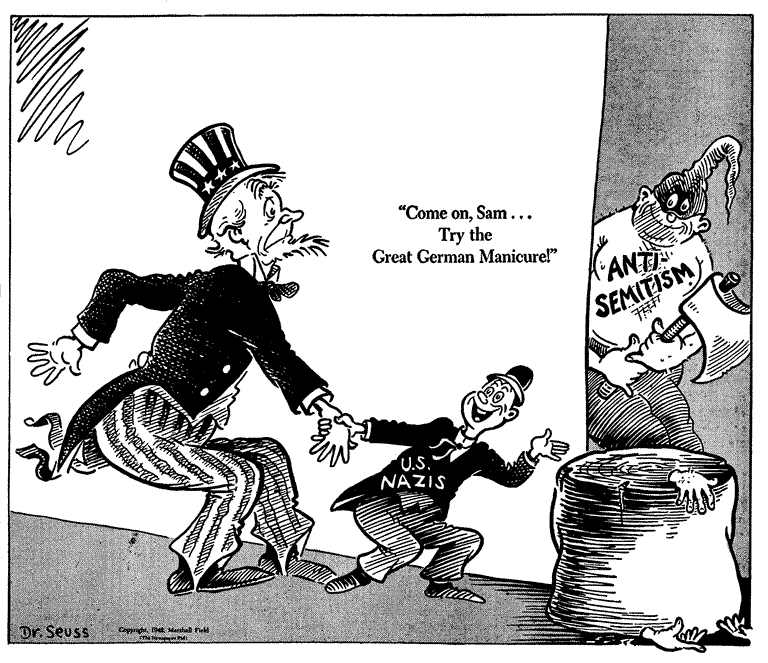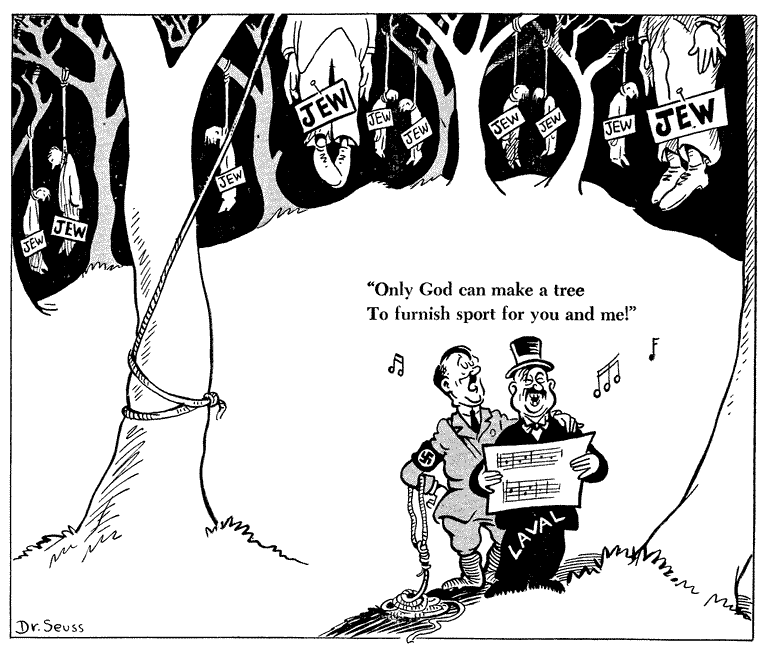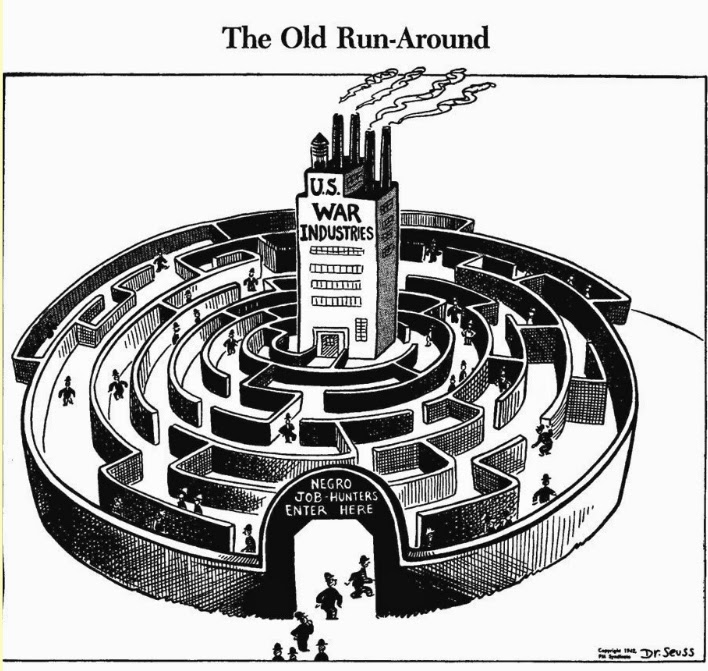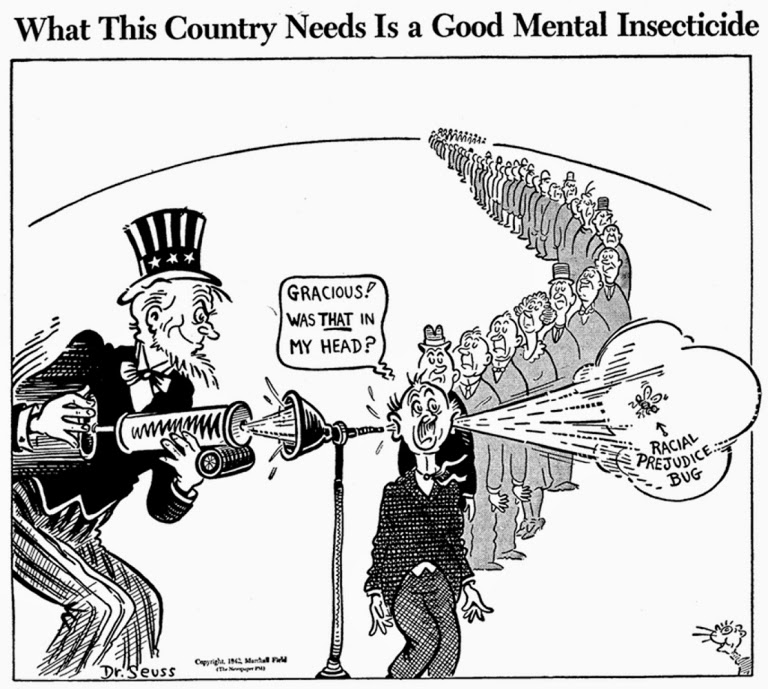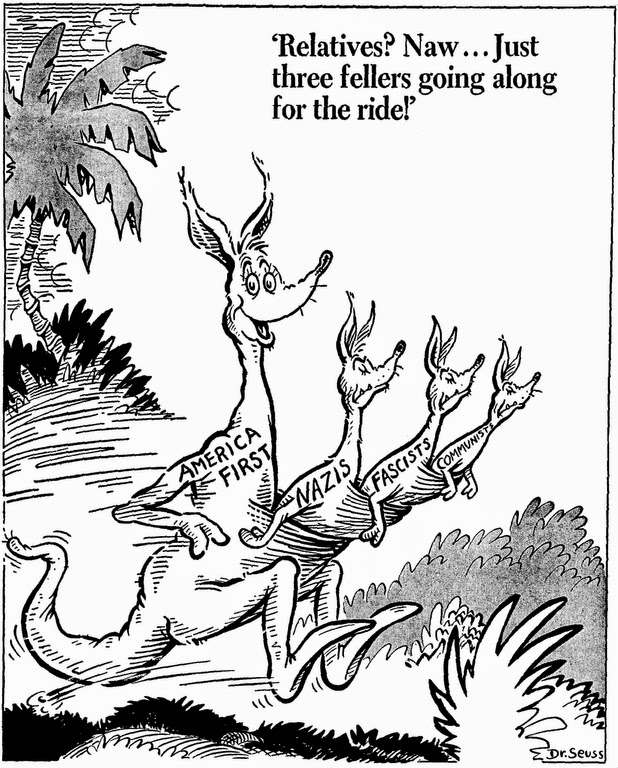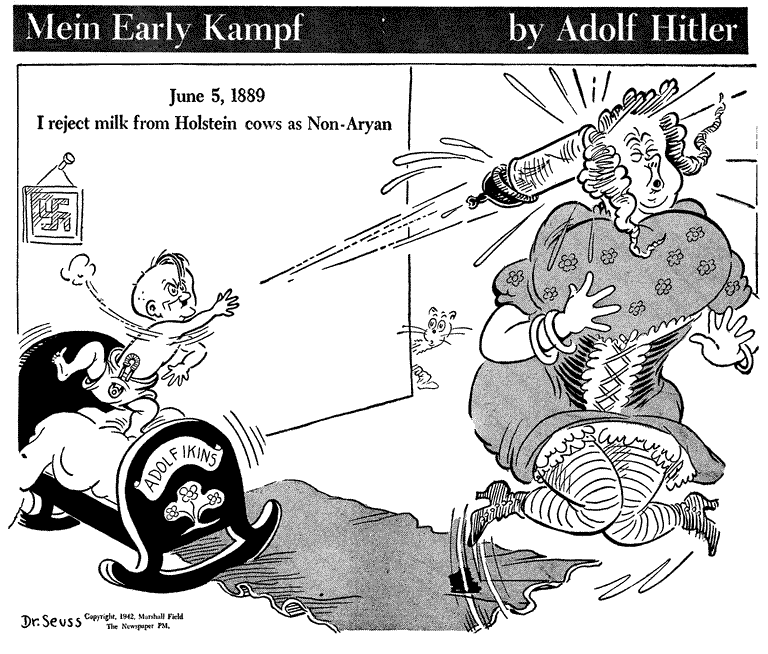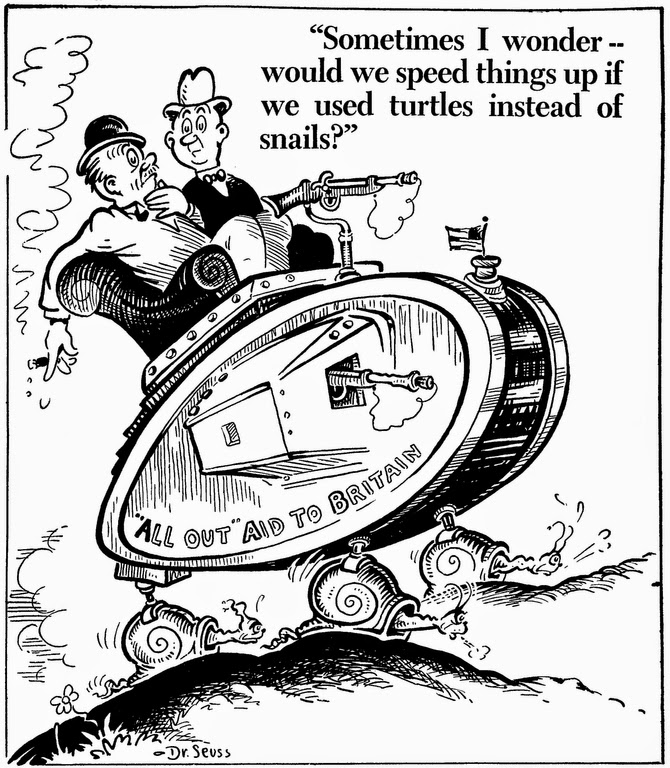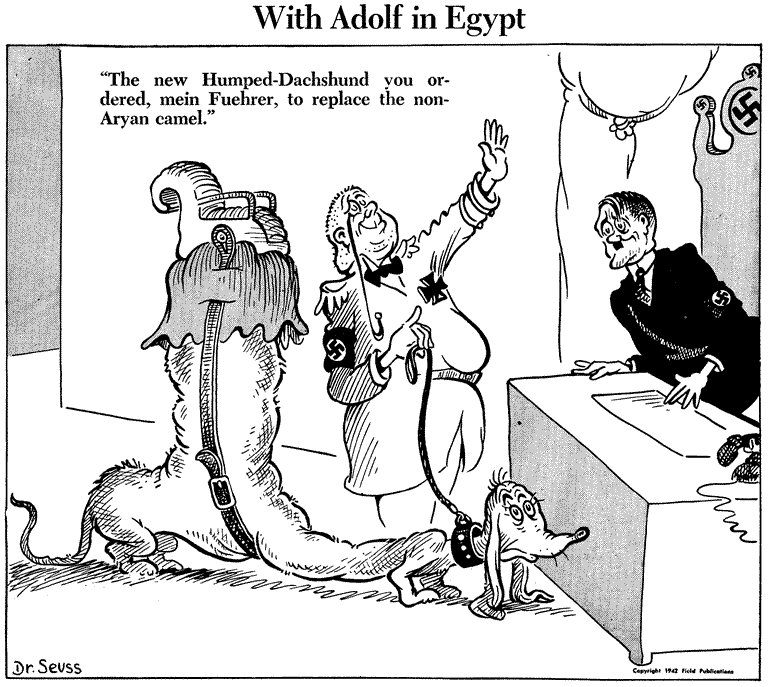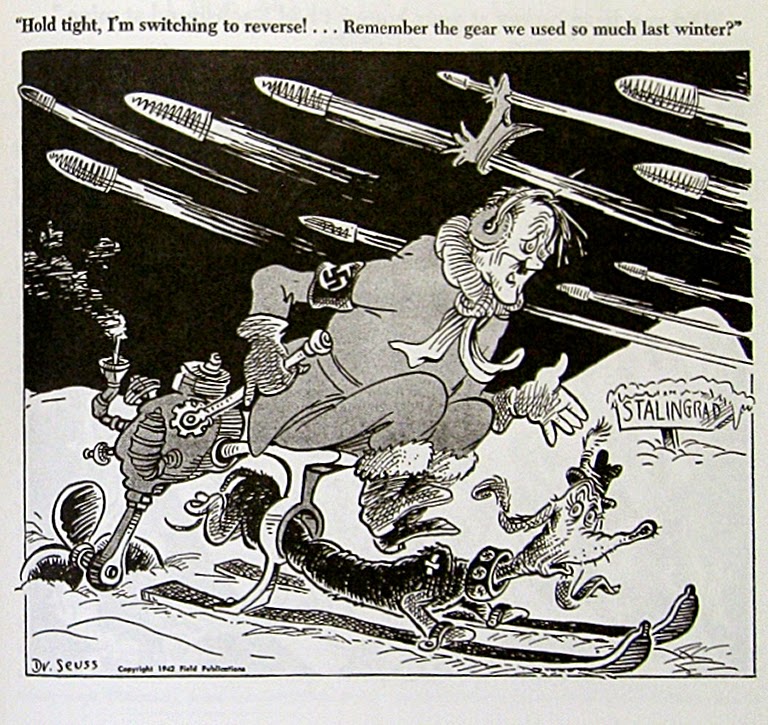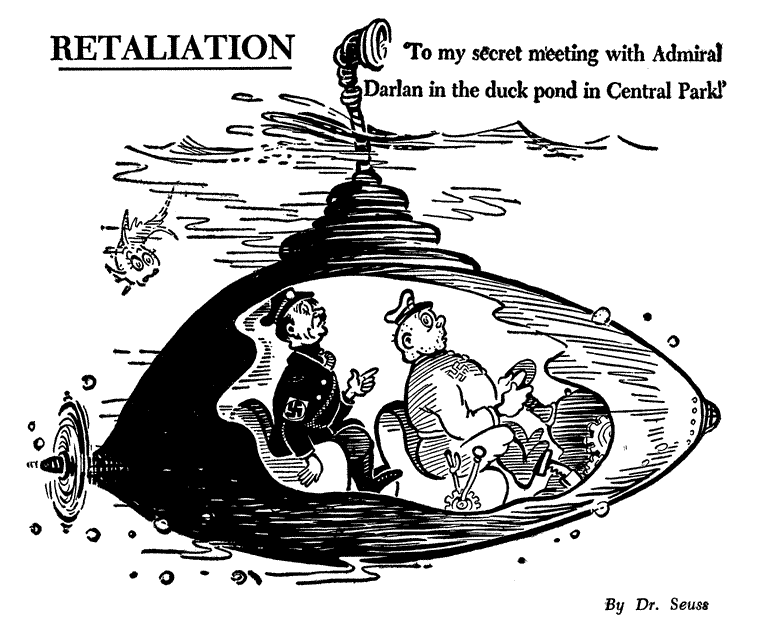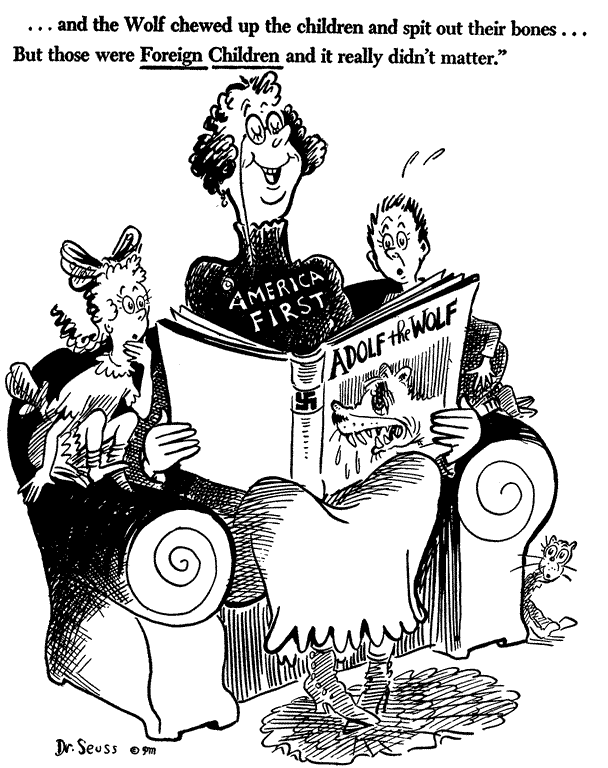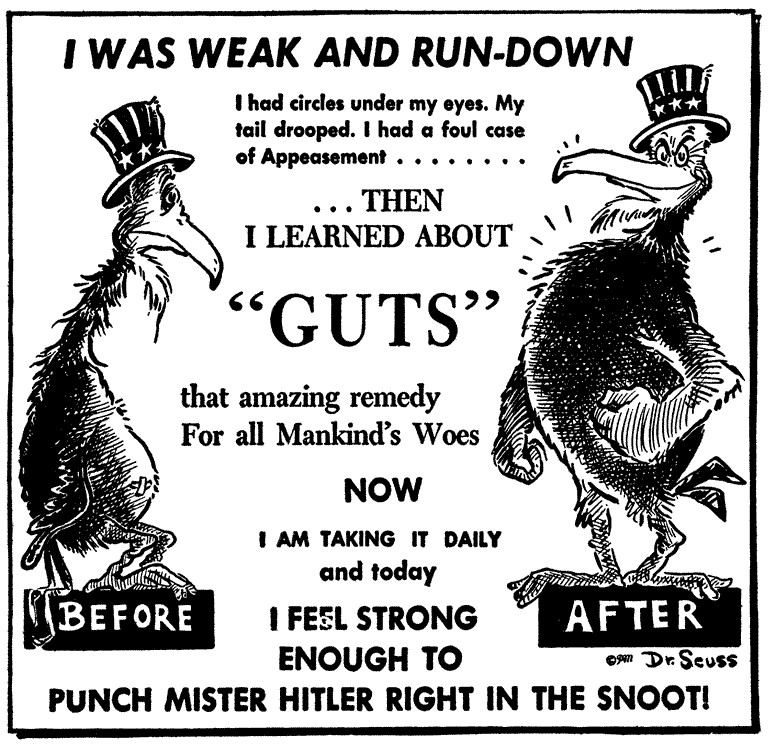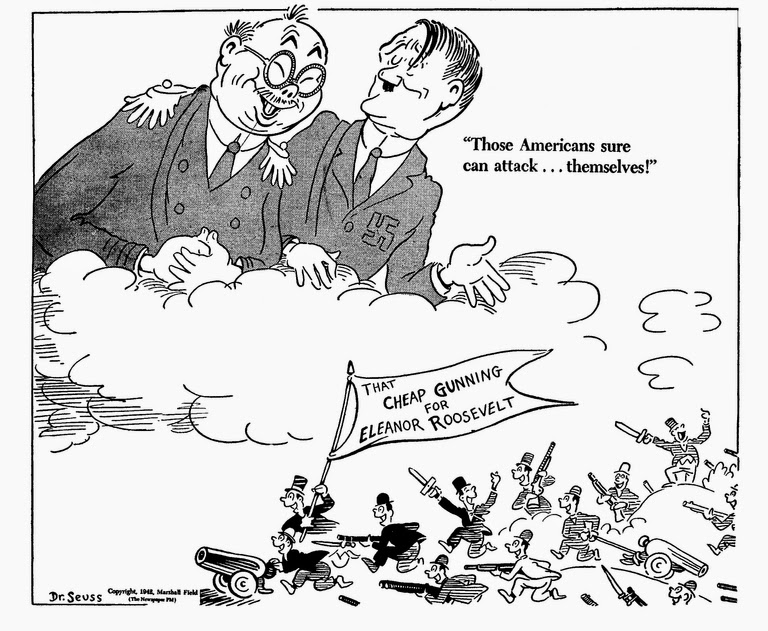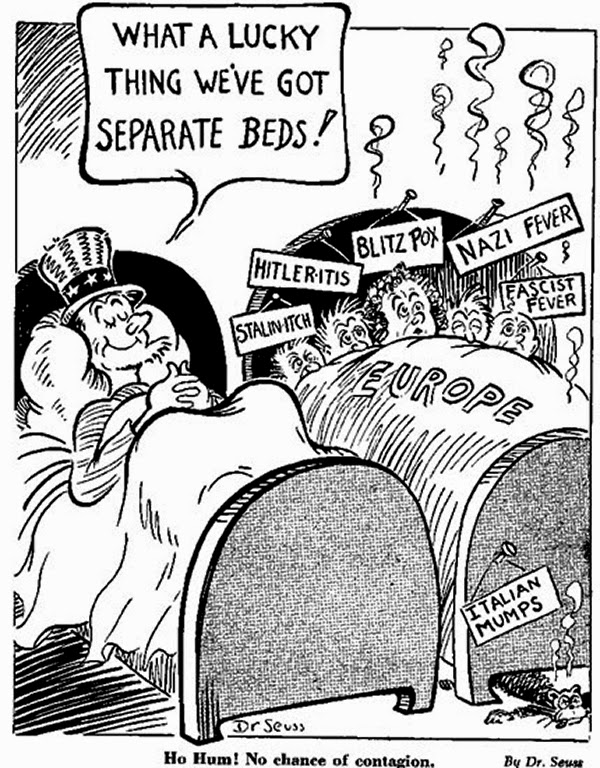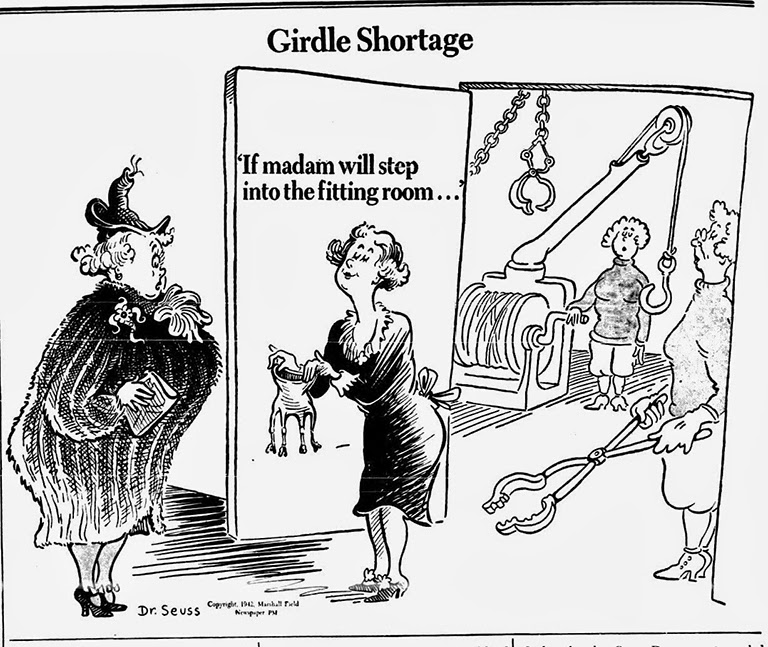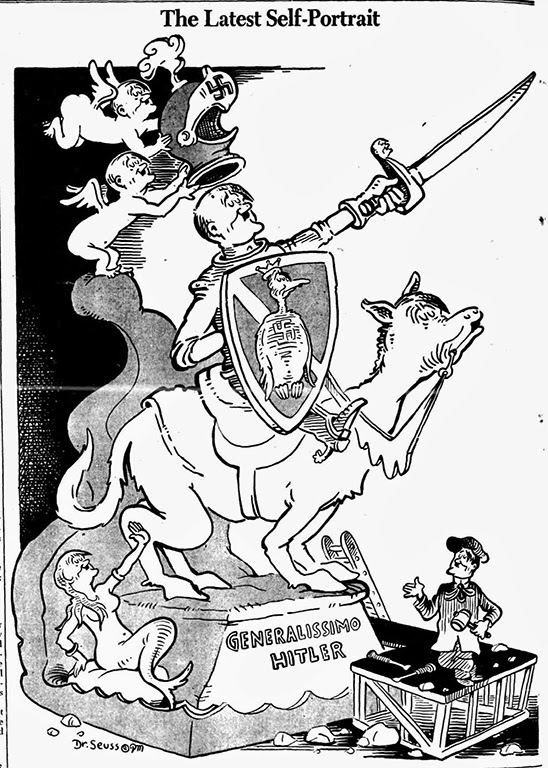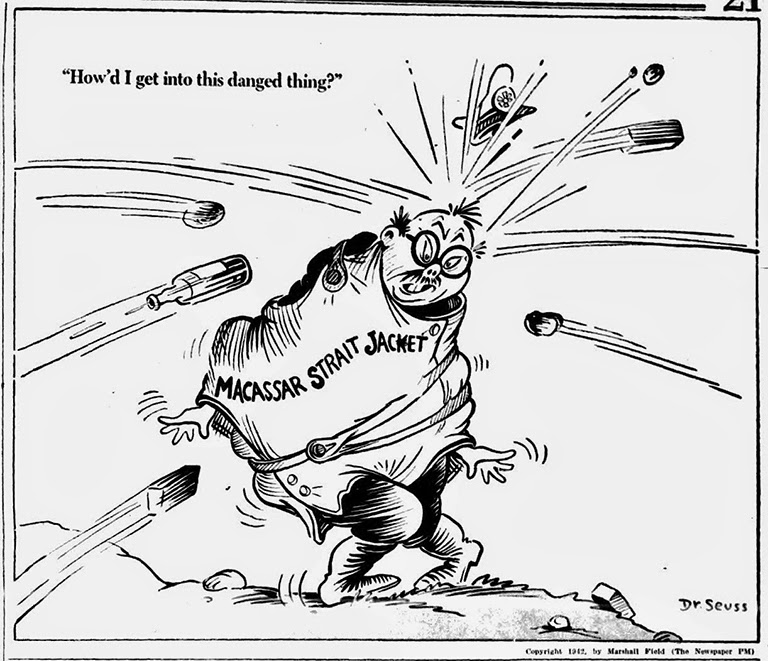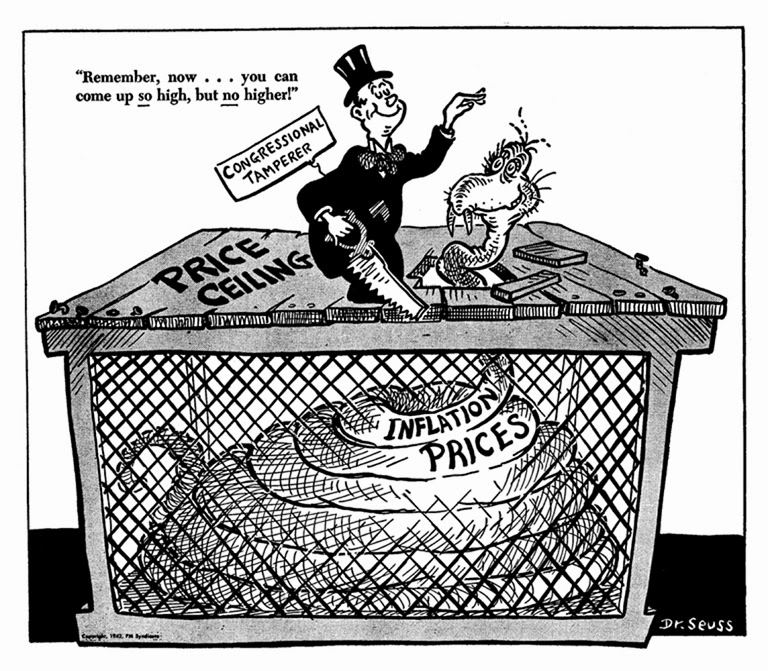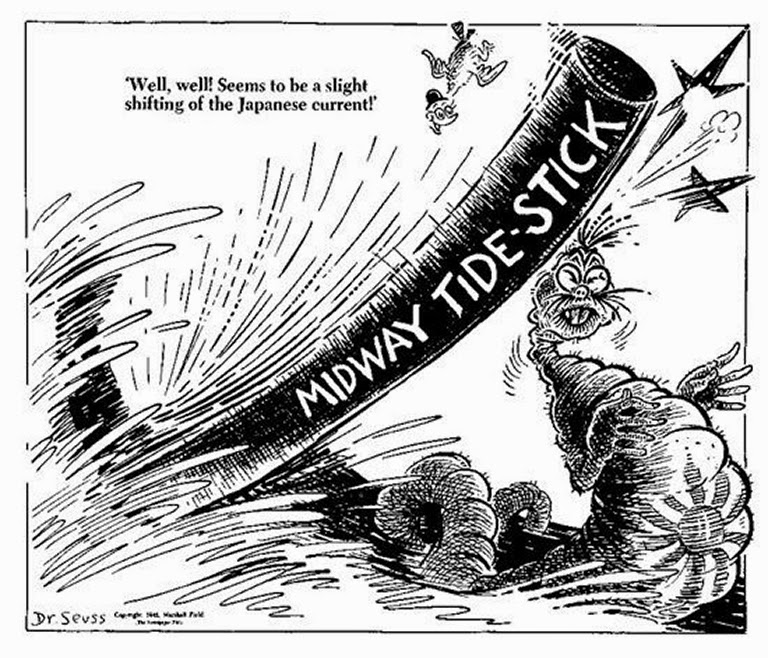
Theodor Seuss Geisel was born on March 2, 1904 in Springfield,
Massachusetts, to Theodor Robert and Henrietta (Seuss) Geisel. Best
known for his world-famous children’s books such as Green Eggs and Ham, The Cat in the Hat and The Lorax published under his pseudonym Dr. Seuss, Geisel achieved early fame in 1928 for his artwork in a hugely successful advertising campaign for Flit, an insecticide manufactured by the Standard Oil Company. The campaign’s catchphrase, “Quick, Henry, the Flit!” became a part of popular culture in the United States for almost 17 years, spawning a song and punch lines for famous comedians such as Fred Allen and Jack Benny. Soon Geisel’s work was appearing regularly in magazines like Life, Liberty, and Vanity Fair, and he was drawing advertising for General Electric, NBC, Standard Oil, Narragansett Brewing Company and many other companies.
In 1941, Geisel was hired to draw political cartoons by the New York City daily newspaper PM. Published by Ralph Ingersoll (New Yorker & TIME magazines) from June 1940 to June 1948 and financed by Chicago millionaire Marshall Field III. The PM was politically left-leaning, supportive of the New Deal, and highly interventionist.
In the two years Geisel drew for PM, the nearly 400 political cartoons he produced dealt almost exclusively with the political and social aspects of American society during the prelude to, and involvement in, the Second World War. Sometimes gentle, sometimes jagged, the cartoons had a political tone that would not have appeared in almost any major newspaper of the time. The illustrations showed strong opposition to American
isolationism; portraying the lack of action toward German and Japanese
aggression as either heartless, cowardly or appeasing. His drawings
were intemperate toward those he felt were either intentionally or
unintentionally leading America to doom, such as Charles Lindbergh, Burton Wheeler, members of America First, and the
American Bund.
Geisel supported the Japanese American internment during World War II, and his attitudes towards Japanese and Japanese Americans has struck many people (responding with hindsight) as a moral blind spot. One cartoon depicted all Japanese Americans as latent traitors or fifth-columnists: but at the same time other cartoons deplored the racism at home against Jews and blacks that harmed the war effort. After the war Geisel overcame his feelings of animosity and used his book Horton Hears a Who! (1954) as an allegory for the Hiroshima bombing and the American post-war occupation of Japan, as well as dedicating the book to a Japanese friend.
His cartoons were strongly supportive of President Roosevelt’s handling of the war and also featured frequent attacks on Congress (especially the Republican Party), criticism of aid to the Soviet Union and the investigation of suspected Communists, and strong statements against any other offenses that he felt lead to disunity and support for the Nazis, intentionally or inadvertently.
In 1943 Geisel joined the Army as a Captain and was commander of the Animation Department of the First Motion Picture Unit of the United States Army Air Forces. Under a military film production unit headed by Frank Capra he wrote the film “Our Job in Japan“, aimed at American troops in the 1945-1952 Allied Occupation, and presenting the problem of turning the militarist state into a peaceful democracy. The film focused on the Japanese military officials who had used the traditional religion of Shinto along with the educational system to take over power, control the populace and wage aggressive war. At the time the film was considered sympathetic to the Japanese, and its distribution was apparently suppressed by Douglas MacArthur. While serving in the, Geisel’s superior officer wrote in an evaluation of Geisel that he was a “personable zealot.”
Theodor Seuss Geisel died of oral cancer on September 24, 1991, at his home in La Jolla at the age of 87.
More:
Dr. Seuss goes to War (Docstoc preview)
Dr. Seuss Went to War: a collection of political cartoons; The Library at U.C. San Diego
Dr. Seuss Goes to War: The World War II Editorial Cartoons of Theodor Seuss Geisel by Richard H. Minear (Amazon.com)




